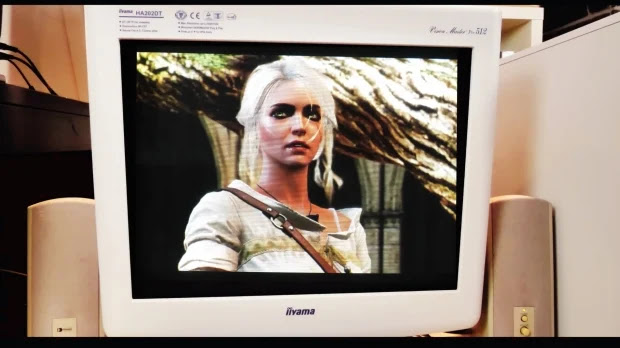The 700Hz CRT Monitor Project and the Quest for Ultimate Refresh Rates
In the world of monitors, refresh rate reigns supreme. Measured in Hertz (Hz), it represents the number of times the image on the screen refreshes per second. Higher refresh rates translate to smoother visuals, especially noticeable in fast-paced games where every millisecond counts. Modern Liquid Crystal Displays (LCD) boast refresh rates reaching 360Hz, but a recent project has reignited interest in an older technology – the Cathode Ray Tube (CRT) monitor. This project achieved the seemingly impossible: a CRT monitor running at a staggering 700Hz.
The project, undertaken by the YouTube channel RetroGamingBase, involved an old IIyama Vision Master Pro 512 CRT monitor. CRT monitors function by firing electron beams at a phosphor-coated screen, creating the image. Unlike LCDs that rely on liquid crystals changing properties, CRTs offer inherent flexibility in refresh rates. However, pushing these limits comes at a cost.
Reaching for the Stars: Overclocking a CRT
RetroGamingBase wasn't the first to explore overclocking CRT monitors for higher refresh rates. Enthusiasts have documented achieving triple-digit refresh rates on specific CRT models. But reaching 700Hz required extreme measures. The team utilized custom resolution utilities to tweak the monitor's operating parameters, essentially forcing it to refresh at a much faster rate than intended.
There's a significant trade-off, however. As the refresh rate climbed, the monitor's resolution plummeted. At 700Hz, the image displayed a mere 320 x 120 pixels, a far cry from the high resolutions of modern displays. This essentially rendered the monitor unusable for most practical purposes.
The Science Behind the Feat
While the project serves more as a testament to the technical prowess of CRT monitors, it sheds light on the underlying technology. Unlike LCDs with discrete pixels that need to be refreshed entirely, CRTs operate by scanning electron beams across the phosphor coating. By manipulating the scan rate, it's theoretically possible to achieve very high refresh rates.
However, limitations exist. Pushing the electron beam too fast can lead to distortion and image quality degradation. Additionally, the high voltage required for such speeds can stress the monitor's components, potentially leading to damage. The RetroGamingBase project likely reached the physical limitations of the specific CRT model used.
A Look Back and a Look Forward
The 700Hz CRT project serves as a reminder of the ingenuity of early display technology. While CRTs have largely been replaced by LCDs for their superior image quality and energy efficiency, the experiment highlights the inherent potential for fast refresh rates in CRT technology.
The project also reignites the debate about the true value of high refresh rates. While there's a clear benefit in fast-paced gaming, the human eye's ability to perceive differences beyond a certain point becomes debatable. Additionally, the trade-off in resolution seen in the 700Hz project makes such extremes impractical for everyday use.
The future of display technology is likely to focus on refining LCD technology, exploring advancements in OLED panels, and potentially even delving into new display paradigms. However, the 700Hz CRT project serves as a fascinating historical footnote, pushing the boundaries of an old technology and reminding us of the relentless pursuit of smoother visuals

